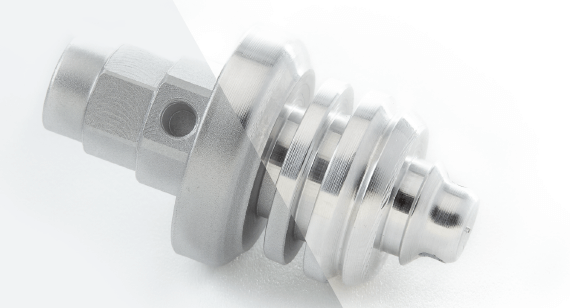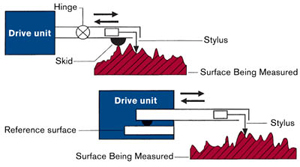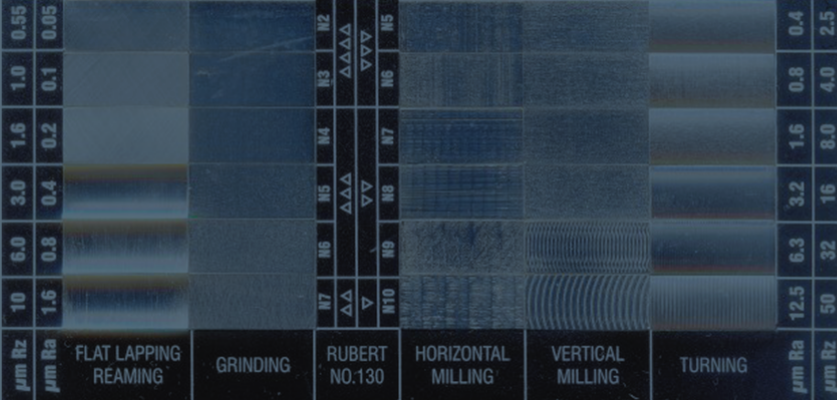Table of Contents
Surface finishes play a crucial role in the manufacturing industry. They are applied to various materials to enhance their properties, improve their appearance, and protect them from wear and tear. But why do different materials require different surface finishes? In this article, we will explore the reasons behind the application of surface finishes and how they impact the performance of different materials.
From metals to plastic, surface finishes are applied to a wide range of materials. The choice of finish is determined by the properties of the material and the intended use. Surface finishes can increase the durability of a material, make it more aesthetically pleasing, or improve its functionality. Understanding the reasons behind the application of surface finishes can help you make better decisions when selecting materials for your next project.
Why Are Surface Finishes Applied to Different Materials?
Surface finishes are a vital aspect of material engineering. They are applied to different materials for a variety of reasons. In this article, we will explore the reasons why surface finishes are applied to different materials.
Protection Against Corrosion
Corrosion is a natural process that occurs when metals come into contact with environmental factors such as moisture, oxygen, and other corrosive substances. Surface finishes such as painting, powder coating, anodizing, and electroplating provide a protective layer that prevents corrosion from occurring. These surface finishes act as a barrier between the metal and the environment, ensuring that the metal remains free from corrosion.
Surface finishes also protect against other forms of degradation such as wear and tear, chemical attacks, and UV radiation. For instance, powder coating is a popular surface finish for outdoor furniture because it provides a durable and long-lasting finish that protects against these elements.
Improvement of Aesthetics
Surface finishes are also applied to materials to improve their appearance. Materials such as metals, plastics, and ceramics can be finished in a variety of ways to achieve a desired appearance. Surface finishes can be used to create a matte, glossy, or textured finish. They can also be used to add color or graphics to the material.
For instance, electroplating is a surface finish that is used to add a layer of metal to a material. This process not only provides protection against corrosion but also improves the appearance of the material by giving it a shiny and lustrous finish.
Enhancement of Functionality
Surface finishes can also be used to enhance the functionality of materials. For instance, materials such as metals and plastics can be finished in a way that makes them more resistant to friction, wear, and tear. This makes them suitable for use in applications where durability is critical.
Anodizing is a surface finish that is commonly used to enhance the functionality of aluminum. This process involves the creation of a protective layer that makes the aluminum more resistant to wear and tear. Anodized aluminum is commonly used in the aerospace industry because of its durability and resistance to corrosion.
Regulation Compliance
Surface finishes are also applied to materials to comply with regulatory requirements. For instance, materials used in the food and medical industries must meet certain safety requirements. Surface finishes such as passivation and electropolishing are used to ensure that materials are free from contaminants and meet regulatory requirements.
Passivation is a surface finish that is commonly used in the medical industry to ensure that medical devices are free from contaminants. This process involves the removal of surface contaminants such as iron and chromium from stainless steel surfaces. Electropolishing is a surface finishing technique that is used to remove surface imperfections from metal surfaces, making them smoother and easier to clean.
Cost-Effective Solution
Surface finishes are also applied to materials to provide a cost-effective solution. For instance, materials such as steel can be coated with a layer of zinc to prevent corrosion. This process is known as galvanization and is a cost-effective way of protecting steel from corrosion.
Surface finishes such as painting and powder coating are also cost-effective solutions for protecting materials against corrosion and wear. These surface finishes are easy to apply and can be done in large volumes, making them an ideal choice for mass production.
Increased Durability
Surface finishes are also applied to materials to increase their durability. Materials such as metals and plastics can be finished in a way that makes them more resistant to wear and tear. This makes them suitable for use in applications where durability is critical.
Surface finishes such as anodizing and electroplating are commonly used to increase the durability of materials. These surface finishes provide a protective layer that makes materials more resistant to corrosion and wear.
Improved Adhesion
Surface finishes are also applied to materials to improve their adhesion properties. For instance, materials such as plastics and composites can be finished in a way that makes them easier to bond with other materials. This makes them suitable for use in applications where adhesion is critical.
Surface finishes such as plasma treatment and corona treatment are commonly used to improve the adhesion properties of materials. These surface finishes create a surface that is more receptive to adhesives, making it easier to bond with other materials.
Surface Preparation
Surface finishes are also applied to materials to prepare them for further processing. For instance, materials such as metals and plastics can be finished in a way that makes them easier to machine or weld. This makes them suitable for use in applications where further processing is required.
Surface finishes such as shot blasting and sandblasting are commonly used to prepare materials for further processing. These surface finishes create a surface that is easier to machine or weld.
Improved Cleanliness
Surface finishes are also applied to materials to improve their cleanliness. Materials such as metals and plastics can be finished in a way that makes them easier to clean. This is particularly important in industries such as food processing and medical where cleanliness is critical.
Surface finishes such as passivation and electropolishing are commonly used to improve the cleanliness of materials. These surface finishes create a surface that is free from contaminants, making it easier to clean.
Increased Safety
Surface finishes are also applied to materials to increase their safety. For instance, materials such as metals and plastics can be finished in a way that makes them less slippery. This makes them safer to use in applications where slipperiness is a concern.
Surface finishes such as texturing and embossing are commonly used to increase the safety of materials. These surface finishes create a surface that is less slippery, making it safer to use.
In conclusion, surface finishes are applied to different materials for a variety of reasons. They provide protection against corrosion, improve aesthetics, enhance functionality, comply with regulatory requirements, provide a cost-effective solution, increase durability, improve adhesion, prepare surfaces for further processing, improve cleanliness, and increase safety. By understanding the reasons for applying surface finishes, materials engineers can select the appropriate finish for the intended application.
Freequently Asked Questions
Why are surface finishes applied to different materials?
Surface finishes are applied to different materials for various reasons. One of the primary reasons is to improve the appearance of the material. A surface finish can make a material look more attractive by changing its color, texture, or shine. Another reason is to protect the material from damage. A surface finish can create a barrier between the material and external factors such as moisture, dirt, and chemicals. This barrier can prevent corrosion, scratches, and other forms of damage.
In addition to improving appearance and protection, surface finishes can also enhance the functionality of a material. For example, a surface finish can make a material more slippery, more adhesive, or more resistant to friction. These properties can be useful in various applications such as manufacturing, construction, and medicine. Overall, surface finishes are applied to different materials to improve their aesthetic, protective, and functional properties.
What are the different types of surface finishes?
There are various types of surface finishes, and each has its unique properties and applications. Some of the most common types of surface finishes include paint, varnish, wax, oil, and plating. Paint is a surface finish that is applied to materials such as metal, wood, and plastic to improve their appearance and protection. Varnish is a transparent or semi-transparent surface finish that is used to protect wood from moisture and scratches. Wax is a surface finish that is applied to floors, furniture, and cars to create a protective layer and enhance their shine.
Oil is a surface finish that is used to protect and enhance the appearance of wood. It can be applied as a clear or colored finish and can be matte or glossy. Plating is a surface finish that involves applying a thin layer of metal to a material such as copper, nickel, or gold. This finish is used to improve the appearance and functionality of the material by making it more resistant to corrosion, wear, and tear.
How are surface finishes applied?
Surface finishes are applied to materials using various techniques such as brushing, spraying, dipping, and rolling. Brushing involves using a brush to apply the finish to the material. This technique is commonly used for small surfaces such as furniture and cabinets. Spraying involves using a spray gun to apply the finish to the material. This technique is commonly used for large surfaces such as walls, cars, and planes.
Dipping involves immersing the material in a bath of the finish. This technique is commonly used for small and complex-shaped objects such as jewelry, screws, and nails. Rolling involves using a roller to apply the finish to the material. This technique is commonly used for flat surfaces such as walls and floors. Overall, the technique used to apply the surface finish depends on the type of material, the type of finish, and the desired outcome.
What factors should be considered when choosing a surface finish?
When choosing a surface finish, several factors should be considered, including the type of material, the intended use of the material, and the desired outcome. For example, if the material is exposed to moisture, a finish that is water-resistant should be chosen. If the material is intended for outdoor use, a finish that is UV-resistant should be chosen.
The desired appearance of the material should also be considered when choosing a surface finish. If a glossy appearance is desired, a finish that is high-gloss should be chosen. If a matte appearance is desired, a finish that is low-gloss should be chosen. The application method and the drying time of the finish should also be considered. Overall, the choice of surface finish depends on the specific requirements of the material and the desired outcome.
How long does a surface finish last?
The lifespan of a surface finish depends on various factors such as the type of material, the type of finish, and the conditions to which the material is exposed. For example, a high-quality paint finish on a car can last for several years, while a low-quality paint finish can crack and peel within a few months. Similarly, a wax finish on a wooden floor can last for several months, while an oil finish can last for several years.
The conditions to which the material is exposed can also affect the lifespan of the surface finish. For example, a material that is exposed to direct sunlight and moisture may require frequent reapplication of the surface finish. Overall, the lifespan of a surface finish depends on the quality of the material and the finish, the conditions to which the material is exposed, and the maintenance of the material.
In conclusion, surface finishes are applied to different materials for various reasons. Firstly, they can enhance the aesthetic appeal of the material, making it more visually appealing to the eye. Secondly, surface finishes can improve the material’s durability, making it more resistant to wear and tear. Finally, surface finishes can also provide protection against environmental factors such as corrosion, rust, and UV radiation.
Choosing the appropriate surface finish for a particular material is crucial, as it can significantly impact the material’s performance and longevity. The right surface finish can help to extend the lifespan of the material, reduce maintenance costs, and improve overall quality.
In today’s market, there are many different types of surface finishes available for different materials. This can make the selection process challenging, but with careful consideration of the material’s intended use, environment, and desired appearance, the right surface finish can be found. Applying the appropriate surface finish is an investment that can pay off in the long run by improving the material’s functionality, appearance, and lifespan.
Request a quote today!
[contact-form-7 id="1578" title="Contact form"]
Please compress the file into a ZIP or RAR file before uploading. Alternatively, send through your RFQ by email.
enquires@unitymanufacture.com





